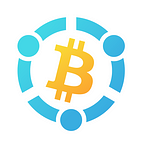ViaBTC | Controversy Surrounds BRC-20 Despite High Returns for Miners
Recently, BRC-20 tokens have gained traction overnight, with immense market popularity, and the first BRC-20 token ORDI has recorded a hundredfold increase. The astonishing surge has sparked a frenzy in the crypto market. As the minting volume of the Ordinals protocol grows rapidly, Bitcoin has set new records in terms of the on-chain transaction volume. According to on-chain data, since May 1, the average transaction fee of BTC has surged from less than $2 to $30 today.
While the experimental token standard BRC-20 created for Bitcoin by Twitter user @domodata has brought a new narrative to Bitcoin, it has also triggered strong dissatisfaction among some members of the community. From the perspective of Satoshi Nakamoto’s original design, Bitcoin was created to build a secure, stable electronic cash system that enables global value exchange and payments. Opponents argue, however, that the JSON text embedded in BTC blocks is meaningless data that only wastes the block space and causes congestion.
No matter how long the BRC-20 boom may last, as @domodata said, “this is simply a fun experiment.” At least for now, BTC miners are reaping handsome profits from BRC-20 tokens. For BTC miners, the mining revenue consists of two parts: block rewards and transaction fees (miner fees). In particular, the block reward remains stable for a long time, as it is halved every four years. As such, to increase the mining output, miners must try to earn higher transaction fees.
Due to its limited block capacity, Bitcoin can only accommodate a certain number of transaction records. On the BTC network, every transaction initiated by users will first enter the mempool and wait to be packaged by miners. Driven by profits, miners prioritize transactions with higher fees, which is why paying higher fees is the only way to enable faster transactions when the network is congested.
The BRC-20 boom has led to a surge in on-chain transaction volume, generating massive revenue from transaction fees. Top mining pools with large hashrate shares offer particularly high miner fees. Here, we can roughly calculate the transaction fee income earned by each mining pool from May 2 to May 9 based on on-chain statistics.
According to ViaWallet, miners across the BTC network earned approximately 2,148.31 BTC in transaction fees from May 2 to May 9, accounting for 23.6% of the total mining revenue. In contrast, transaction fees only accounted for less than 4% of total revenue during the same period in April.
Based on the hashrate share of each mining pool provided by BTC.com, with BTC priced at $27,479, the transaction fee income earned by each pool, as of May 10, is as follows:
1. Foundry earned 640 BTC (about $17.581 million), 29.8% of the total;
2. AntPool earned 494 BTC (about $13.57 million), 23% of the total;
3. Binance Pool earned 251 BTC (about $6.895 million), 11.7 % of the total;
4. F2Pool earned 236 BTC (about $6.483 million), 11% of the total;
5. ViaBTC earned 200 BTC (about $5.494 million), 9.3% of the total;
However, the craze seems to be limited to Bitcoin miners and market speculators. For ordinary BTC users, especially people like Salvadorans and Nigerians who have already adopted BTC as a daily payment method, high transaction fees are formidable. Of course, there are solutions, such as the Lightning Network.
In addition, BTC transaction accelerators can also achieve fast confirmation despite network congestion. Essentially, in a pool that packages most BTC blocks at the moment, the accelerator pulls the user’s transaction out of the mempool and puts it into the queue for the next packaging order, thereby speeding up confirmation.
ViaBTC Pool realized Bitcoin users’ demand for acceleration services back in 2018 and launched Transaction Accelerator, providing every Bitcoin holder with free (100 spots per hour) as well as paid acceleration services. On ViaBTC, users can simply submit the TXID of an unconfirmed transaction containing at least 0.0001BTC/KB to enjoy free acceleration. If the free 100 spots are all taken, users can also go for the paid option.
In addition to occupying existing block space and causing a surge in fees, BRC-20 also presents many security vulnerabilities. SlowMist, a crypto security platform, pointed out that BRC-20 tokens based on Ordinals are vulnerable to hacking, and the assets minted by users can be easily stolen. Ali Sherief, a Bitcoin core developer, also initiated a discussion in the bitcoin-dev mail list, questioning whether Bitcoin developers should take action against “worthless” assets like BRC-20 tokens.
Of course, this creates a new problem: will the principle of decentralization be compromised? If Bitcoin developers were to take action and intervene in normal market activities, they would definitely be accused of excessive centralization. Will Bitcoin developers allow BRC-20 tokens to run their course, or will they intervene? Let’s stay tuned.
